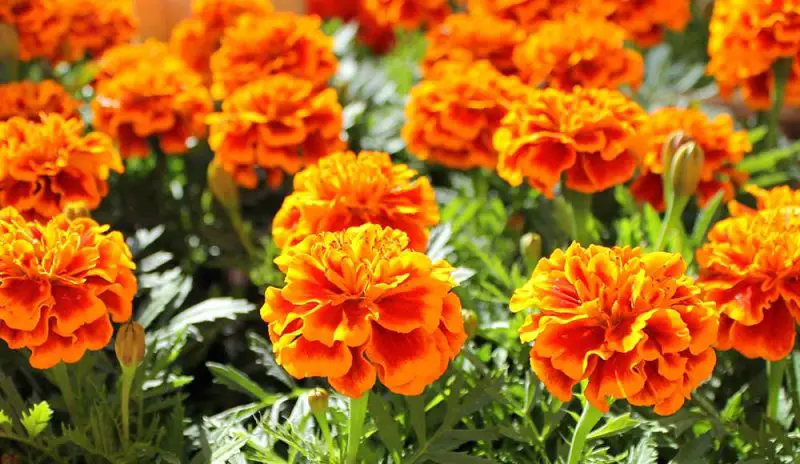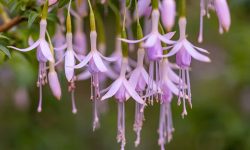Marigolds are popular garden favorites, prized for their bold colors, resilience in various climates, and natural ability to deter garden pests. However, when your marigolds start growing green and healthy but refuse to produce flowers, it can be frustrating and puzzling. Understanding the reasons behind this lack of blooming is the first step toward bringing your marigolds back to full, colorful life. Several environmental, care-related, and biological factors could be interfering with the blooming process.
This guide explores the common causes of non-blooming marigolds and offers detailed, practical fixes to help you restore your garden’s brilliance. Whether you’re a seasoned gardener or a beginner nurturing your first marigold patch, addressing these issues early on will make all the difference in your plant’s performance.
Environmental Conditions That Affect Blooming

Marigolds thrive in full sunlight, and one of the most overlooked issues with blooming has to do with light exposure. If marigolds are planted in areas with limited sunlight—especially less than six hours a day—they may grow tall and leafy but fail to flower. This is because marigolds are sun-loving plants that need intense light to initiate their blooming cycle. Shaded gardens, cloudy microclimates, or placement near taller plants can limit the light exposure they receive.
In addition to sunlight, temperature plays a role in marigold blooming. Although marigolds are heat-tolerant, extreme fluctuations or consistently cool weather may delay flowering. If planted too early in spring or exposed to prolonged periods of cool nighttime temperatures, marigolds may prioritize vegetative growth over flower production. Choosing the correct planting time and monitoring microclimates within your garden can make a significant impact on their ability to bloom.
Soil conditions are another key factor. Marigolds prefer well-drained soil that is not overly rich in nutrients. Surprisingly, soil that is too fertile—especially when high in nitrogen—can promote lush foliage but suppress flowering. This imbalance encourages the plant to focus on leaf and stem growth rather than blossoms, which can confuse gardeners who see healthy growth but no flowers. Balancing your soil nutrients is essential for proper bloom development.
Watering Practices and Their Impact
Watering marigolds may seem straightforward, but improper watering is a common reason behind a lack of blooms. Marigolds require a balance: too little water can stress the plant and delay flowering, while overwatering can lead to root rot or fungal conditions that inhibit growth. Watering deeply but infrequently allows the plant to establish strong root systems while also promoting healthy bloom development.
Consistently soggy soil suffocates roots and may lead to yellowing leaves and stunted growth before any flowers appear. If the plant spends most of its energy coping with moisture-related stress, it won’t have the reserves necessary for flower production. Using raised beds or improving soil drainage through amendments like sand or compost can help regulate water levels more effectively.
Timing also matters when it comes to watering. Watering in the early morning helps prevent fungal problems by giving the plant time to dry during the day. Evening watering, especially in humid conditions, increases the risk of disease and may contribute to a general decline in plant health—ultimately interfering with blooming. Adjusting your watering schedule can often lead to quick improvements in flowering.
Fertilization Mistakes That Hinder Flowers
Fertilizer misuse is one of the most frequent mistakes gardeners make when trying to encourage blooming. Many assume that applying more fertilizer will result in more flowers, but that is rarely the case. Fertilizers high in nitrogen are ideal for promoting lush, green foliage. However, they do very little to stimulate blooming—in fact, they can inhibit it. For flowering, phosphorus and potassium play a more important role.
If you notice that your marigolds have plenty of leaves but not a single bud, it’s time to examine what you’re feeding them. Switching to a balanced fertilizer or one specifically labeled for flowering plants can help correct nutrient imbalances. These formulas often contain higher phosphorus levels, which are vital for flower formation and development.
It’s also worth noting that marigolds generally don’t need heavy feeding. Over-fertilizing can cause salt buildup in the soil, damaging the roots and creating an inhospitable environment for blooming. When applying any fertilizer, always follow the manufacturer’s guidelines and consider testing your soil beforehand. A soil test can provide a clearer picture of what your marigolds might be lacking—or getting too much of.
Timing and Deadheading Techniques
Sometimes the issue lies not with nutrients or water but with timing. Marigolds follow a seasonal blooming cycle, and planting them too early or too late in the year can interfere with flower production. If seeds are sown too early in cool soil, the seedlings may take longer to mature, delaying blooming. Conversely, planting too late in the season may not allow enough time for the plant to fully develop before conditions become unfavorable.
Deadheading, the practice of removing spent blooms, is essential to encourage continued flowering in marigolds. When old flowers are left on the plant, marigolds begin putting energy into seed production rather than forming new buds. Regularly snipping off faded blooms redirects the plant’s energy into producing fresh flowers instead of seeds, resulting in a more vibrant and prolonged bloom season.
Proper deadheading technique involves pinching or cutting the faded flower heads just above a leaf node. This ensures that new branches can emerge from the node, often bringing with them additional flower buds. By keeping up with deadheading, you also maintain the overall appearance of your marigold patch, making it look neater and healthier.
Pest and Disease Issues That Interrupt Blooms
While marigolds are known for repelling certain pests, they are not immune to pest infestations themselves. Aphids, spider mites, and thrips are a few examples of insects that can feed on marigolds and cause enough stress to inhibit blooming. These pests often target young growth or flower buds, reducing the plant’s ability to produce or maintain flowers. Identifying and treating infestations early is crucial.
Insect damage can be subtle at first—curled leaves, yellowing, or sticky residue are early warning signs. Over time, these pests can spread and cause widespread damage. Natural remedies such as neem oil, insecticidal soap, or even introducing beneficial insects like ladybugs can help control pest populations without harming the plant.
Diseases like powdery mildew or botrytis can also prevent marigolds from blooming. These fungal infections often occur in humid conditions and can spread rapidly if not managed. Symptoms include white powdery coatings on leaves, gray mold, or black spots. Ensuring good air circulation around your plants, watering at the base, and avoiding overhead irrigation can reduce disease incidence and help restore blooming capacity.
Plant Variety and Life Cycle Considerations
Different types of marigolds have slightly different blooming behaviors. African marigolds (Tagetes erecta) often produce larger blooms but may take longer to flower compared to French marigolds (Tagetes patula). If you’re growing a variety that naturally blooms later in the season, a lack of flowers in early summer may not be a cause for concern. Understanding the typical bloom timeline for your specific variety can prevent unnecessary worry.
In some cases, the plants may be at a stage in their life cycle where blooming hasn’t yet occurred. Young seedlings or transplants may need several weeks to establish before producing flowers. If your marigolds are healthy but not yet mature, a little patience might be the only fix required. Ensure they’re getting the proper care in the meantime to support eventual flowering.
Also consider the seed quality and source. Low-quality seeds or those not adapted to your climate may produce weak plants that struggle to bloom. Using certified, high-germination seeds from a reliable source can make a significant difference in your marigolds’ overall performance.
Companion Plants and Garden Competition
Sometimes marigolds are unintentionally overshadowed—literally—by neighboring plants. Tall vegetables, shrubs, or ornamental flowers can create competition for sunlight, water, and nutrients. When marigolds are crowded out or blocked by larger plants, they may not receive the conditions they need to bloom. Evaluating plant placement and ensuring adequate spacing can address these competition-related issues.
Additionally, marigolds planted too closely together can end up shading one another, leading to similar problems. Poor airflow and increased humidity from overcrowding can also make them more susceptible to disease, which further inhibits blooming. Providing enough room for each marigold to grow and breathe will encourage healthier plants and better flower development.
If companion planting is part of your garden strategy, consider marigolds’ specific needs when placing them. They work well alongside many vegetables, especially tomatoes, but still require open space and direct sunlight. Thoughtful positioning can enhance both their bloom potential and their role in supporting other plants.
Seasonal Transition and End-of-Life Signs
As marigolds progress through the growing season, they eventually reach a point where blooming naturally slows down. This is a normal part of the plant’s life cycle. Toward the end of summer or early fall, older marigolds may begin producing fewer flowers as they shift energy toward seed development and eventual dormancy or death.
If your marigolds have been blooming steadily for months and then begin to decline, it may simply be a sign that the growing season is winding down. You can prolong blooming by continuing deadheading and providing good care, but eventually, all annual plants complete their cycle. Collecting seeds at this stage allows you to prepare for future plantings with your own seed stock.
However, if blooming halts prematurely or never begins at all, it likely points to one or more of the care or environmental issues discussed earlier. Evaluating all aspects of care—light, water, nutrition, pests, and competition—can help pinpoint the specific cause and guide your next steps.
FAQs About Marigolds Not Blooming
What causes marigolds to grow leaves but no flowers?
Excessive nitrogen in the soil often leads to lush green growth with few or no blooms. Marigolds need balanced nutrients with more phosphorus for flowering.
Can lack of sunlight stop marigolds from blooming?
Yes, marigolds require at least 6 hours of direct sunlight daily. Insufficient light can delay or prevent flower development altogether.
How does overwatering affect marigold blooms?
Overwatering can lead to root rot and fungal disease, both of which stress the plant and hinder its ability to produce flowers.
Do marigolds need deadheading to keep blooming?
Regular deadheading redirects the plant’s energy from seed production to new flower growth, helping extend the blooming season significantly.
Will marigolds eventually bloom on their own?
If all growing conditions are met and the plant is mature, most marigolds will bloom naturally. However, issues like poor soil or pests can still delay this.
Conclusion
When your marigolds aren’t blooming, it can feel like a setback, especially when everything else in the garden seems to be thriving. But most blooming issues can be resolved by carefully observing your plants and making a few targeted adjustments. Whether it’s increasing sun exposure, changing your fertilization routine, improving drainage, or controlling pests, each fix contributes to a more bloom-friendly environment.
Marigolds are resilient, and once you address the underlying causes, they typically respond quickly. With a little patience and proper care, you can look forward to a garden full of bright, cheerful marigold blossoms that not only beautify your space but also support the health of the entire garden ecosystem.






